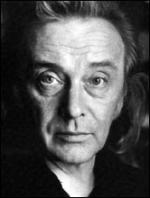
Dmitry Mikhailovich Krasnopevtsev
Dmitry Krasnopevtsev Studio
The wife and lifelong companion of Dmitry Mikhailovich Krasnopevtsev (1925--1995), Lydia Pavlovna Krasnopevtseva (1925--1999), donated around seven hundred works to the Museum of Personal Collections. She first met Dmitry Krasnopevtsev when they sat at the same desk at school. Throughout their long life together, Lydia carefully sheltered Dmitry from the hardships of everyday life. After the artist’s death in 1995, she donated the contents of his workshop to the Museum of Personal Collections, which opened a permanent exhibition in a separate room, bringing together drawings, etchings, paintings and objects from the artist’s studio.
A member of the “generation of the sixties”, Dmitry Krasnopevtsev occupies an important place in the history of post-war Russian art. Many of the artist’s still-lifes depict objects from his own collection of curios. The relocation of his studio to the museum offers viewers a fascinating behind-the-scenes glimpse of the artist’s creative laboratory.
The Krasnopevtsev collection was based on the principle of “collect everything of possible interest”. It was slightly reminiscent of the kunstkammers from the reign of Peter the Great (1689--1725), which included both works of art and natural monstrosities. The artist’s studio contained such diverse objects as ancient vessels, the [Saviour Wet Beard] icon (16th century), a silver-plated candlestick, a rusty ship’s chain and a bracket fungus.
The contents of Dmitry Krasnopevtsev’s studio were inventorised under ten main headings -- decorative art, minor plastic art (including such rare works as the eighteenth-century pendant ink well), archaeological relics, geological relics, stones, shells, anthropological material, dried plants and minerals. Friends, acquaintances, art critics and everyone else who visited the artist’s studio drew parallels between this cabinet of curiosities and a cave or other natural shelter. Krasnopevtsev’s collection also evoked associations with a children’s game or Charles Dickens’ [Old Curiosity Shop]. In an unassuming apartment in a modern block of flats in Novye Cheremushki, a secret door led into another world of magic and mystery.
Dmitry Krasnopevtsev kept a diary over the last decades of his life. Several entries throw light on the artist’s attitude towards the objects in his collection: “A dirty, broken mother-of-pearl shell was hanging from a copper-black chain at the bootblack’s stall. An ash tray full of cigarette butts, defamed and defiled beauty. My request to buy it, so I could wash, clean and sanctify it, received a categorical no.” For Krasnopevtsev, claiming an object for his studio implied rescuing and consecrating it. He always used to say: “Beauty is harmony, order and silence.” He believed that stones corresponded best of all to this silence: “Agate is a wonder of harmony and beauty.” The objects in the artist’s studio did not immediately become the heroes of his painting. This was preceded by several stages of their creative transformation. The first stage was a small sketch, forming an exact and, at the same time, generalised image. Several of these “plastic formulae” were sometimes united in one common drawing, as in [Composition 1] (1960--80). Such combinations of objects then formed the bases of the artist’s canvases, mostly still-lifes.
Dmitry Krasnopevtsev’s friend, the art historian Rostislav Klimov, wrote: “Krasnopevtsev is a master of the still-life, which he regards as a command of the language of objects or, wider, a command of the language of nature. This implies the command and subordination of reality. Two lines can always be discerned in his works -- nature (realised in the objects) and the artist (the person turning these objects into a higher order of generality).” Such quests for the hidden sense of existence break with rational interpretation, likening Krasnopevtsev to the Surrealists. André Breton, the poet and theorist of Surrealism, was also known for his love of stones.
One of the most commonly encountered motifs in the oeuvre of Dmitry Krasnopevtsev, in both his drawings and paintings, is three trees or three vertical stones at the top of a hill. This appears to be an allusion to the Crucifixion, when Jesus Christ was martyred alongside two thieves. This metaphor is clear in his later work [Cross (Golgotha)] (1993).
After Dmitry Krasnopevtsev died in 1999, the magic of his studio became even more apparent. It seemed sacrilegious to intrude upon its integrity. The artist’s studio was more than just an independent creation, a giant installation created over several decades; it was also the key to his enigmatic oeuvre. The Pushkin Museum of Fine Arts decided to embark on an unprecedented step and to attempt to recreate a section of the artist’s studio at the Department of Personal Collections. As a result of a creative collaboration between Lydia Krasnopevtseva, museum director Irina Antonova and principal designer David Bernstein, Dmitry Krasnopevtsev’s cupboard, desk, easel with an unfinished still-life and paintings have now been transferred to a small room in the Museum of Personal Collections.
The permanent exhibition also includes photographs by Igor Palmin, a friend of the artist and frequent visitor to his studio. Palmin donated a photographic portrait and pictures of the studio to the Museum of Personal Collections. A memorial exhibition, the Dmitry Krasnopevtsev Studio traces the creative development and fantasy of this remarkable artist.





